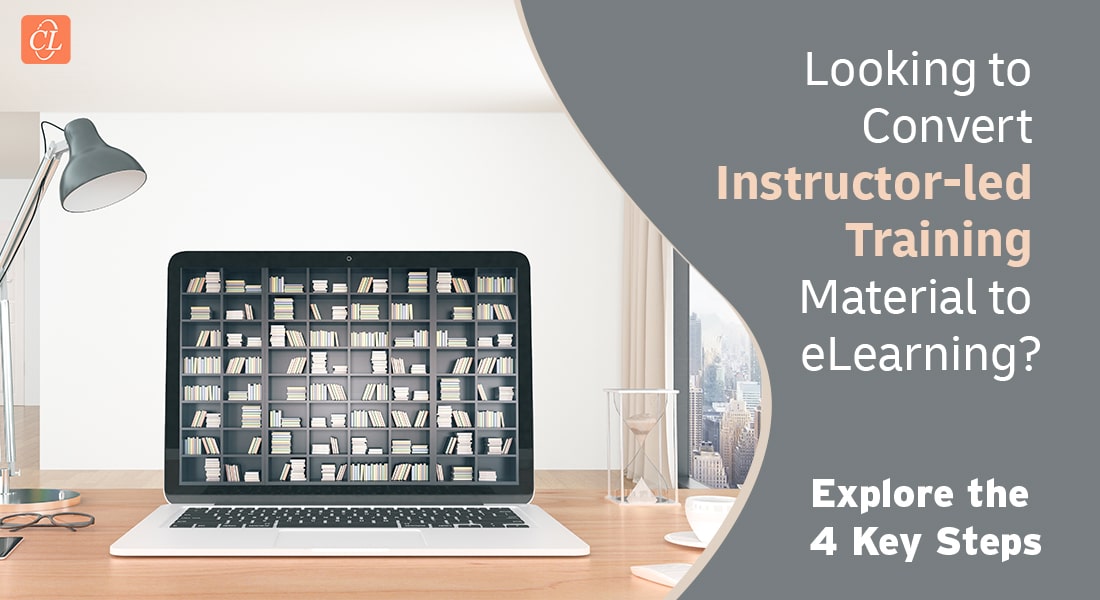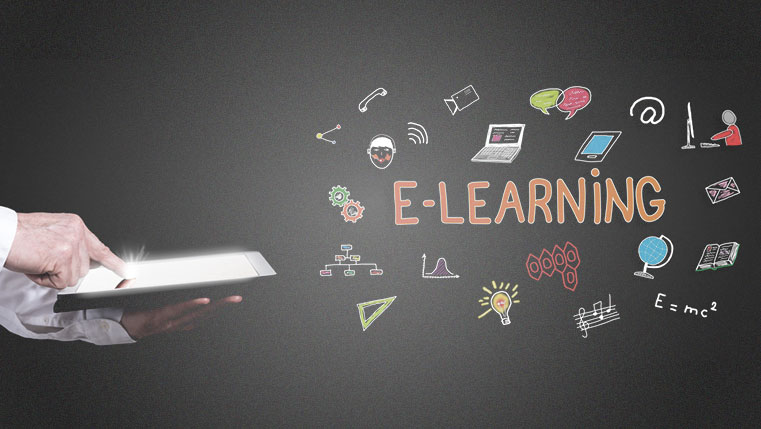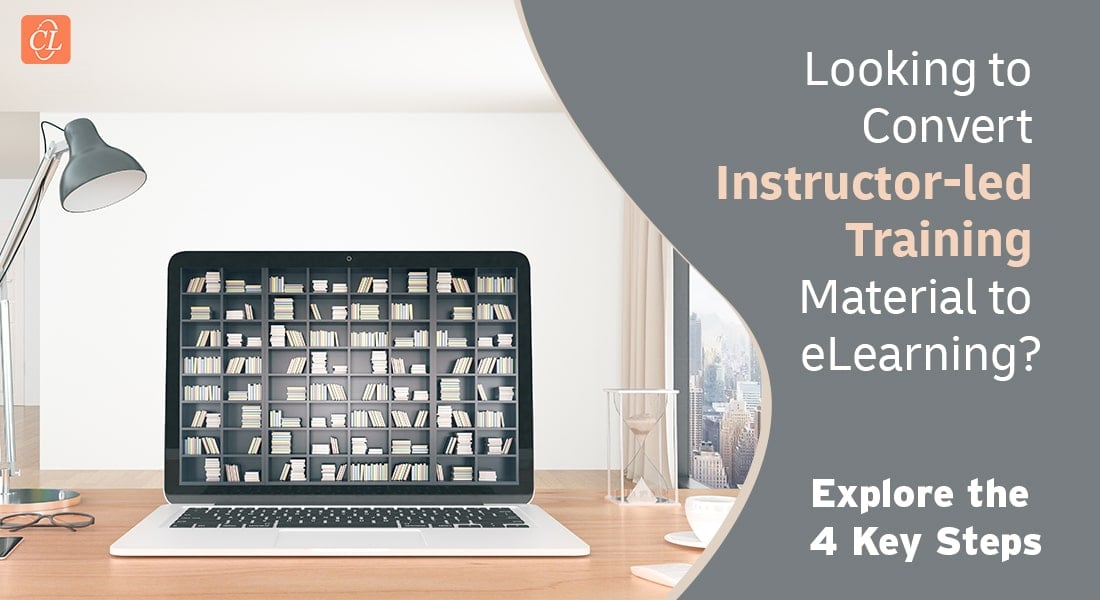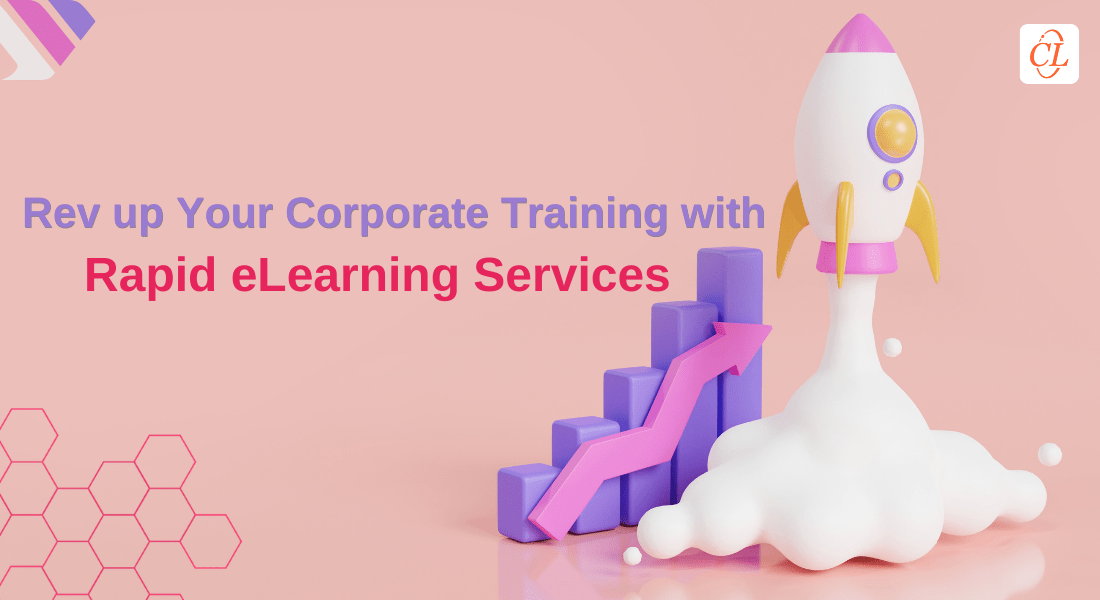4 Key Considerations for High-Impact eLearning!

“Is my classroom training material ready for eLearning?” That’s what you might be asking yourself if you’re a training manager with a lot of experience in classroom training but just getting started with eLearning.
This blog is going to help you answer the question. But first, some basics.
What is & What isn’t eLearning
eLearning is learning facilitated by technology for its design, development, delivery, administration, and evaluation.
Looking to Get Started with eLearning?
4 Key Considerations
- Align training with business goals
- Decide the format, structure
- Select an appropriate strategy
- Pick the right authoring tool for development
What is NOT eLearning
- PPT + Audio and Publish
- PPT Published to HTML
- Online Resources
None of these can be considered eLearning because they do not provide for learner engagement which is an important consideration for eLearning. The classroom offers the opportunity to plan and carry out a variety of collaborative activities by the instructor. In eLearning, on the other hand, you need to compensate for the absence of the instructor with a variety of interactivities and engagement techniques.
Become an eLearning Champion!
Let’s go through a few high-level considerations for converting your classroom training material into eLearning.
Converting ILT to eLearning – The Process
1. Analyze learners
- Who are they?
- What is their age group?
- What is their previous experience with eLearning?
- What kind of interactivities and engagement would they enjoy?
2. Study the learning environment
- Where would learners access training?
- Which device would they be using?
3. Revisit learning objectives
- Are the learning objectives performance-based?
- Are they SMART? (Specific, Measurable, Achievable, Relevant, and Time-bound)
4. Analyze content
- Is the available content adequate to meet the set learning objectives?
- Are there any gaps in the content?
5. Fill any content gaps
- Work with the SME and fill up the content gaps
6. Decide on level of interactivity
- Level 1: Simple, linear page turners
- Level 2: Interactive activities with video and audio
- Level 3: Animated videos, customized audio effects, scenarios, simulations, etc.
- Level 4: Interactive games, simulated job performance exercises, avatars, stories/scenarios, use of multimedia
Explore the 4 levels of eLearning interactivities.
7. Decide on audio
- The amount of audio to be used in the course
- The tone of narration (formal, informal, conversational)
8. Devise an appropriate instructional strategy
9. Choose the right authoring tool
More on the last two points a little later in the blog.
4 Key Considerations for High-Impact eLearning
1. Align Training with Business Goals
Training programs should reflect the organization’s business objectives and aim to maximize ROI. They should help employees PERFORM better by bridging the gap between their current and expected performance. The learning objectives of any training intervention, be it classroom or eLearning, should be derived from the desired performance.
The objectives need to be performance-based and link the training with learners’ performance. If this cycle is followed strictly, it will result in the training directly impacting and helping the organization to achieve its business goals.
2. Decide on the Format, Structure, Performance Support
Format, structure, and performance support are key considerations, when you are looking to convert your classroom material into eLearning.
1. Format
There are many different formats you can explore.
- eLearning
- Microlearning
- Mobile learning
- Blended learning
Decide if you want to go with eLearning (or its avatars) or blend it with other learning mediums.
2. Structure
Modern learner prefers shorter learning modules. You have to choose between standalone courses or curriculums of shorter related modules.
If you are going for a curriculum, decide on:
- Number of modules
- Duration of each module
3. Performance support
Electronic Performance Support Systems (EPSS) help learners access learning resources at their moment of need. They include:
- Job-aids
- Knowledge databases
- Performance support tools
Microlearning is ideal for performance support because of its short duration and availability in different formats. Examples include how-to videos, infographics, flashcards, GIFs, etc.
3. Select an Appropriate Strategy
An instructional design strategy is a high-level plan of how a topic is dealt with for a particular audience – the visual, audio, multimedia, and assessment strategies. The choice of strategy depends mainly on the learning objectives, the learning environment, content, and the learners.
Check popular ID strategies in this eBook.
4. Decide on the Authoring Tool for Development
Authoring tools are content development tools that help develop
interactive online training courses. Once the training requirements and audience profile are in place, you need to select the most appropriate authoring tool for developing your course/s.
You have many options to choose from – iSpring, Articulate Storyline, Adobe Captivate, Lectora, etc. The choice of the authoring tool will depend on the type of training, the audience profile, the budget, timelines, etc.
To Wrap Up
This was all about converting your classroom training material to eLearning. For more insights on getting started, answers to questions on your readiness and more, go through this webinar now!





